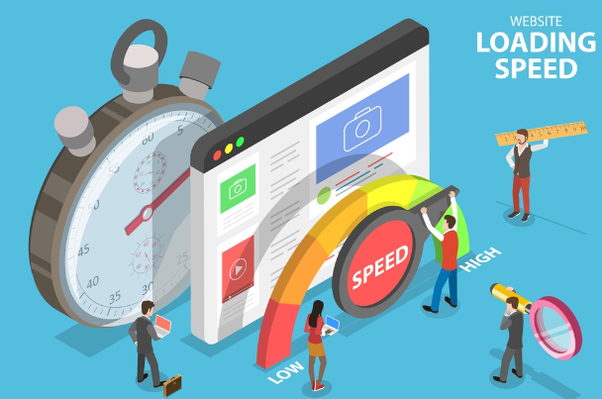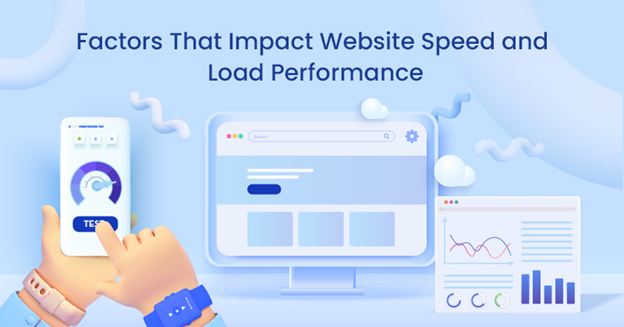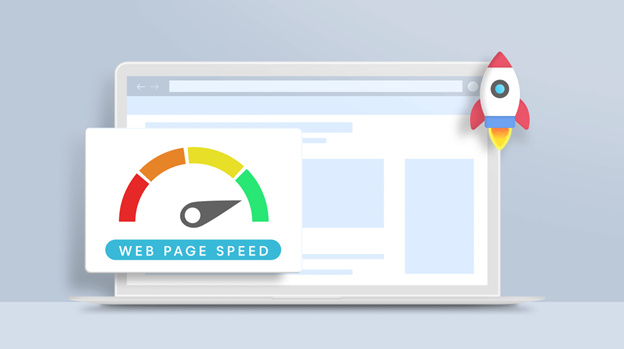SHARE

In today’s digital age, where attention spans are short and competition is fierce, having a fast-loading website is crucial. Users expect instant access to information and are quick to abandon sites that take too long to load. Not only does a slow-loading website lead to a poor user experience, but it can also have a negative impact on your SEO ranking. In this article, we will explore the importance of website loading speed and provide practical steps to help you enhance your website’s performance.
Understanding the Importance of Website Loading Speed
First impressions matter when it comes to websites. Research has shown that users stay longer on websites that load quickly, increasing engagement and higher conversion rates. Additionally, a fast-loading website instils trust and credibility in your brand, making visitors more likely to return. But why is website loading speed so important? Let’s delve deeper into the correlation between loading speed and user experience.
The Correlation Between Loading Speed and User Experience
Imagine visiting a website that takes ages to load. Frustrating, isn’t it? Slow-loading websites not only test the patience of users but also give the impression that the site may be outdated or poorly maintained. Users often associate a slow-loading website with untrustworthiness and move on to competitors who offer a better online experience.
On the other hand, a fast-loading website creates a positive user experience. It allows users to quickly access the information they seek without waiting. This seamless experience keeps users engaged and encourages them to explore more of your website and interact with your brand.
So, how can you optimise your website’s loading speed and improve user experience? One way is to optimise your images. Large image files can significantly slow down your website. Compressing images without compromising quality and using the appropriate image formats can reduce their file size and improve loading speed. Another crucial factor is your website’s code. Bloated or poorly optimised code can cause your website to load slowly. By optimising your code and minimising unnecessary scripts and stylesheets, you can streamline your website and enhance its performance.
How Loading Speed Impacts Your SEO Ranking
Did you know that loading speed is a factor that search engines consider when ranking websites? Search engines, like Google, prioritise user experience and favour websites that provide a fast and smooth browsing experience.
Search engines can crawl and index your pages more efficiently when your website loads quickly. This means your content can be discovered and displayed to users faster, increasing your chances of ranking well in search engine results. On the other hand, a slow-loading website not only disappoints users but also hampers your chances of ranking well in search engine results. If your website takes too long to load, search engines may perceive it as less valuable and, as a result, may push it lower in the search rankings. This can have a significant impact on your online visibility and organic traffic.
Therefore, optimising your website’s loading speed is crucial for user experience and improving your SEO ranking. Investing in techniques such as caching, minifying files, and leveraging browser caching can enhance your website’s loading speed and boost its visibility in search engine results. Website loading speed is vital to user experience and SEO ranking. Ensuring that your website loads quickly and efficiently can create a positive impression on users, encourage engagement, and improve your online visibility. So, take the necessary steps to optimise your website’s loading speed and reap the benefits it brings.
[thrive_leads id=’8456′]
Identifying Factors That Affect Your Website’s Loading Speed
Before we discuss strategies for enhancing your website’s loading speed, it’s important to understand the factors that can slow it down. By identifying these factors, you can address them directly and improve your website’s performance.
The Role of Web Hosting in Loading Speed
Your choice of web hosting provider plays a vital role in determining your website’s loading speed. Shared hosting, for example, can result in slower loading times as multiple websites share server resources. On the other hand, dedicated hosting or cloud hosting tends to provide faster loading speeds as resources are dedicated solely to your website. If your website is experiencing slow loading times, consider upgrading your hosting plan or exploring alternative hosting options to improve performance.
The Impact of Large Images and Media Files
One common culprit behind slow-loading websites is the use of large images and media files. High-resolution images and videos can significantly slow down the loading process, especially for users with slower internet connections or mobile devices. Optimising your images and media files is essential to addressing this issue. Utilise image compression techniques, resize images to the appropriate dimensions and consider using lazy loading, which loads images as users scroll down the page rather than all at once.
The Effect of Excessive Plugins and Widgets
While plugins and widgets can enhance your website’s functionality, using too many can have a detrimental effect on loading speed. Each plugin adds extra code to your website, increasing page size and potentially causing conflicts that negatively impact performance.
To improve loading speed:
- Review your plugins and widgets regularly.
- Remove any that are unnecessary or outdated.
- Opt for lightweight alternatives or consider combining functionality to reduce the resources required to load your site.
Practical Steps to Enhance Your Website’s Loading Speed
Now that we understand the importance of a fast-loading website and have identified the factors that can affect loading speed, let’s explore some practical steps you can take to optimise your site’s performance.
Optimising Your Images for Faster Loading
An image-heavy website can significantly impact loading speed. Optimising your images can reduce file sizes without compromising image quality. Use image editing software or online tools to compress your images, removing unnecessary metadata and reducing file sizes for faster loading times. Furthermore, consider using the appropriate image format for each image on your website. JPEG is commonly used for photographs, while PNG is ideal for transparent graphics and images.
Minimise HTTP Requests
When a user visits your website, their browser makes multiple HTTP requests to fetch various resources, such as images, CSS files, and JavaScript files. Each request adds time to the loading process, potentially slowing down your website. Minimise the number of HTTP requests by consolidating and optimising your website’s files. Combine multiple CSS and JavaScript files into fewer files and consider using CSS sprites to combine multiple images into a single file. This reduces the number of requests made by the browser, resulting in faster loading times.
Enabling Browser Caching
Browser caching allows certain elements of your website to be stored on the user’s device, reducing the need to retrieve them from the server every time they visit a page. Storing static resources like images, CSS files, and JavaScript files on the user’s device can decrease loading times for returning visitors. Configure your server to include appropriate cache headers in your HTTP responses to enable browser caching on your website. This will ensure returning visitors can access cached content, resulting in a faster browsing experience.
Utilising Tools to Measure Your Website’s Loading Speed
Now that you’ve implemented strategies to improve your website’s loading speed, it’s important to measure the impact of these changes. Several tools can help you evaluate your website’s performance and identify areas for further optimisation.
Introduction to Google’s PageSpeed Insights
Google offers PageSpeed Insights, a free tool that analyses a website’s loading speed and offers suggestions for improvement. You enter your website’s URL to obtain an analysis of its performance on desktop and mobile devices. PageSpeed Insights scores your website on a scale of 0 to 100 and provides specific recommendations to enhance loading speed.
Understanding GTmetrix Performance Reports
GTmetrix is another valuable tool for measuring your website’s loading speed and performance. It provides a detailed performance report that includes metrics such as page speed, page size, and number of requests. Additionally, GTmetrix offers recommendations on how to optimise your website’s performance, allowing you to fine-tune and further enhance loading speed.
Maintaining Your Website’s Loading Speed Over Time
Improving your website’s loading speed is not a one-time task; it requires ongoing maintenance to ensure optimal performance. Here are some key strategies to maintain your website’s loading speed over time.
Regularly Updating and Cleaning Up Your Website
Outdated software, plugins, and themes can hinder your website’s loading speed. Regularly update all aspects of your website, including your content management system, plugins, and themes, to take advantage of the latest performance improvements and security patches. In addition to updates, regularly clean up your website by removing unused files, spam comments, and old backups. This reduces the size and complexity of your website, resulting in faster loading times.
Monitoring Your Website’s Performance Regularly
Continuously monitoring your website’s loading speed is essential to identifying any new issues that may arise. Regularly check performance metrics using tools like Google Analytics or third-party monitoring services to ensure your website continues to meet speed expectations. If you notice a decline in loading speed, investigate the potential causes and take appropriate action to rectify the issue promptly.
Following these strategies and staying vigilant can maintain your website’s loading speed, provide an excellent user experience, and maximise your online presence. Remember, a fast-loading website is vital to attracting and retaining users. By optimising your website’s performance, you can enhance user experience, boost your SEO rankings, and drive greater digital success.
[thrive_leads id=’3729′]
Frequently Asked Questions About Website’s Loading Speed
How fast should your website load?
A good page speed for SEO is three seconds or less. A fast-loading page speed will help your SEO efforts, as Google rewards fast sites over slow ones. Keep mobile page speed in mind as well in your optimisation efforts.
What is loading speed?
Loading speed is the time it takes, measured in seconds, for a web page to download and display on a user’s browser. It’s a strong indicator of a website’s overall “health” and can be correlated with some key performance indicators of the business that owns it.
Why is speed important in web design?
Page speed is important to users because, well, faster pages are more efficient and provide a much better on-page user experience. Per a recent Kissmetrics infographic, if a page takes longer than 3 seconds to load, over a quarter of users will click away and choose a different search result.
What factors affect the speed of a website page?
There are many different factors that affect page load time. The speed at which a page loads depends on the hosting server, amount of bandwidth in transit, and web page design – as well as the number, type, and weight of elements on the page. Other factors include user location, device, and browser type.
What aspects make websites load faster?
To speed up website loading time, try to focus on reducing the data size of images and use intelligent methods of generating bigger images by using smaller elements to reduce the net size of these images. Another way to reduce load time and speed up is to use gzip compression, as many new browsers support it.








